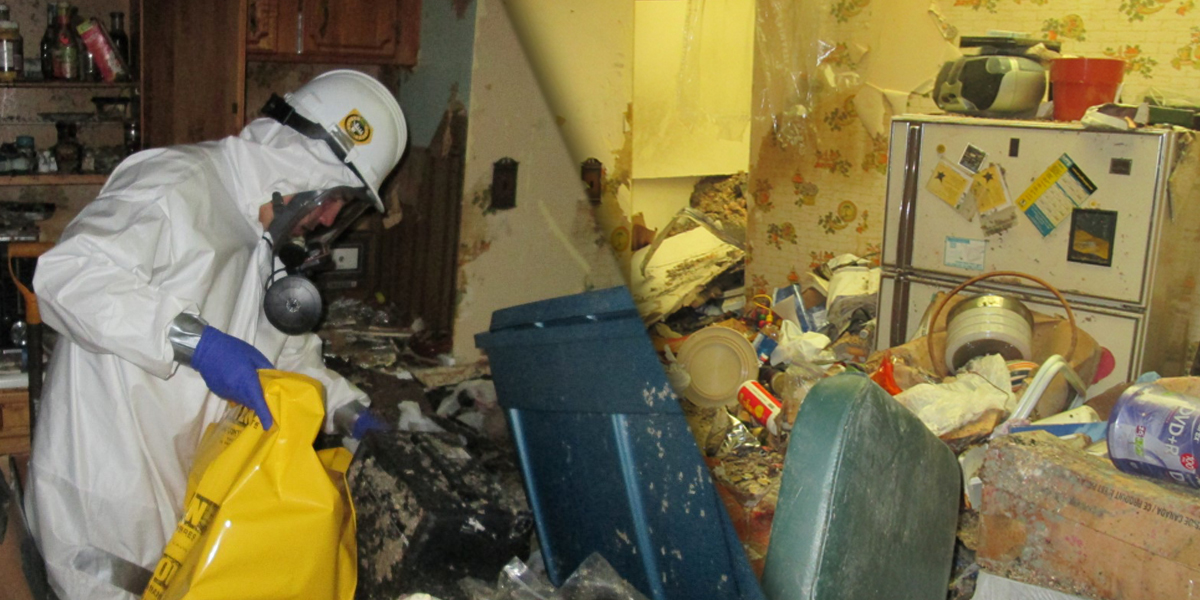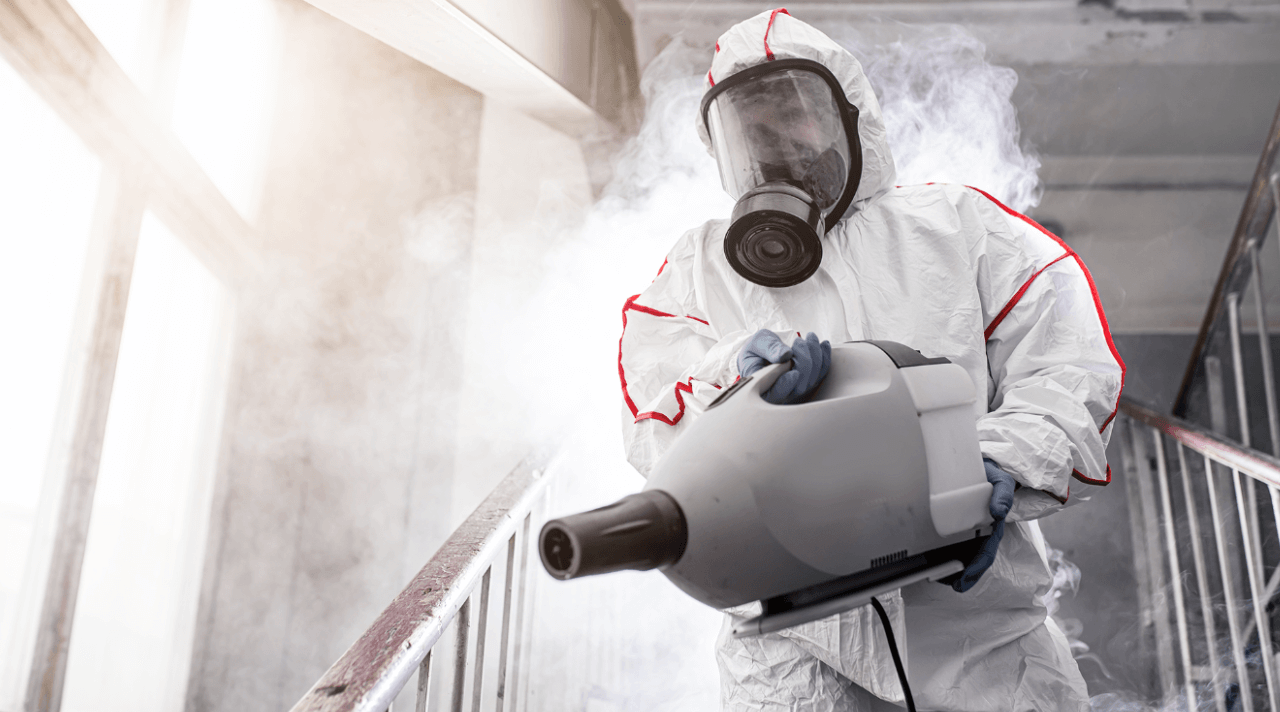Decomposition Death Clean Up: Specialized and Respectful Remediation
Decomposition Death Clean Up: Specialized and Respectful Remediation
Blog Article
Specialist Biohazard Cleansing and Decontamination for Blood, Bodily Fluids, and Hazardous Materials
In the realm of biohazard cleaning and purification for blood, physical fluids, and dangerous materials, accuracy and expertise are extremely important. The possible health and wellness risks linked with direct exposure to biohazards highlight the crucial demand for thorough handling and complete clean-up. Specialized training equips specialists with the understanding and skills needed to deal with these hazardous scenarios successfully. However, it is not just about cleansing up; the significance of employing appropriate decontamination strategies can not be overstated. As we browse the elaborate landscape of biohazard cleaning, recognizing the nuances of policies, conformity, and the specialized tools at play becomes important in ensuring a detailed and risk-free purification process.
Wellness Risks of Biohazard Exposure
Exposure to biohazards presents substantial wellness risks that can result in serious repercussions for areas and people alike. Biohazards encompass a vast array of biological compounds, consisting of blood, physical fluids, mold, bacteria, viruses, and various other possibly contagious products. When people enter into call with these biohazards, whether via crashes, improper handling, or environmental exposure, they face the danger of contracting severe illnesses or illness.
Among the key wellness dangers related to biohazard exposure is the transmission of contagious illness. Bloodborne microorganisms such as HIV, hepatitis B and C, and various bacteria can be present in biohazardous materials, positioning a straight danger to human health and wellness. Inhaling airborne biohazards like mold spores or entering call with polluted surfaces can also lead to respiratory system concerns, allergic reactions, and other adverse wellness results.
In addition, biohazard direct exposure can have long-lasting health implications, with some conditions materializing years after the initial call (Blood Cleanup). Consequently, it is important to prioritize proper biohazard cleansing and decontamination to mitigate these wellness threats and ensure the safety and security of individuals and areas

Specialized Training for Biohazard Cleaning
When it concerns managing biohazard cleaning efficiently and safely, specialized training plays a basic duty in guaranteeing appropriate purification procedures are followed. Biohazard clean-up calls for specific knowledge and abilities to properly mitigate dangers linked with bloodborne virus, bodily fluids, and dangerous materials. Specialists learnt biohazard cleanup undertake strenuous instruction on exactly how to securely manage, get rid of, and throw away biohazardous materials to protect against contamination and exposure.
Specialized training for biohazard clean-up covers a series of crucial topics, including appropriate individual safety tools (PPE) use, bloodborne pathogen awareness, decontamination techniques, and harmful waste disposal procedures. People learnt biohazard cleaning are outfitted with the necessary knowledge to evaluate contamination levels, determine prospective dangers, and carry out appropriate cleanup procedures in conformity with governing requirements.
Constant training and education are extremely important in the field of biohazard cleanup to remain upgraded on the current purification innovations, safety methods, and guidelines. By investing in specialized training, biohazard cleanup specialists can successfully reply to emergency situation clean-up situations and guard both public health and wellness and the environment.
Relevance of Correct Decontamination Techniques
Making use of appropriate purification methods is vital in biohazard cleanup to properly decrease and get rid of hazardous materials wellness dangers. Reliable decontamination not only makes certain the removal of noticeable traces of blood, bodily liquids, and various other biohazards however additionally targets undetectable virus that may posture major wellness threats otherwise properly removed. By adhering to strict purification protocols, trained specialists can considerably lower the risk of exposure to unsafe microorganisms, viruses, and microorganisms that could result in infections or conditions.
Appropriate purification techniques include using specialized devices and anti-bacterials that are especially developed to reduce the effects of biohazards effectively. Detailed cleaning and disinfection of polluted areas are essential to prevent the spread of microorganisms and ensure a safe setting for residents. In addition, the right disposal of biohazardous waste complying with decontamination procedures is important in preventing contamination of various other surfaces or individuals.

Tools and Devices for Safe Clean-up
The proper equipment and devices play a critical function in guaranteeing the secure and efficient clean-up of biohazardous materials. When dealing with blood, physical fluids, or unsafe products, biohazard cleaning specialists count on specialized gear to lessen exposure threats and completely decontaminate the afflicted area. Individual protective tools (PPE) such as gloves, goggles, coveralls, and masks are crucial to secure against direct call with potentially transmittable materials. In addition, biohazard cleaning packages including anti-bacterials, absorbent products, and biohazard bags are used to safely have and dispose of polluted things. Blood Cleanup.
Advanced cleansing devices Continue like hospital-grade anti-bacterials, HEPA-filtered vacuums, and fogging makers are used to sanitize surfaces and eliminate biohazards successfully. Specialized tools such as sharps containers and biohazard waste disposal bins are used to securely take care of sharp objects and biohazardous waste materials. By making use of the best devices and devices, biohazard cleansing specialists can ensure a biohazard cleanup after death thorough cleanup process that prioritizes security and lessens wellness risks for both workers and passengers of the afflicted room.
Rules and Compliance in Biohazard Cleaning
Proper adherence to guidelines and conformity criteria is vital in biohazard cleansing to ensure the security of both workers and the setting. Government firms such as OSHA (Occupational Safety and Health And Wellness Administration) and the EPA (Environmental Security Company) have established particular guidelines for biohazard cleanup procedures to decrease health clean up biohazard threats and ecological contamination. These guidelines cover a variety of facets consisting of the handling, transportation, and disposal of biohazardous materials, as well as the essential training and safety devices needed for personnel associated with the cleaning procedure.
Biohazard cleansing business should stay current with these laws to assure that their procedures meet the required safety and security requirements. Failure to follow these regulations can cause serious consequences, consisting of penalties, lawful action, and endangering the wellness of people and the atmosphere. By following stringent regulations and conformity procedures, biohazard cleaning companies can successfully alleviate risks and make sure a complete and secure clean-up procedure for all celebrations involved.
Verdict
To conclude, biohazard cleaning and decontamination call for specific training, proper techniques, and adherence to guidelines. Exposure to blood, bodily liquids, and hazardous products postures significant wellness risks, making it important to utilize the right equipment and devices for secure cleaning. By following strict protocols and guidelines, professionals can effectively reduce the threats related to biohazard direct exposure and make certain the security of both themselves and others.
As we navigate the complex landscape of biohazard cleaning, understanding the nuances of laws, compliance, and the customized tools at play comes to be necessary in making certain a risk-free and thorough decontamination process. (Blood Cleanup)
When it comes to managing biohazard clean-up effectively and securely, specialized training plays an essential function in making sure appropriate purification procedures are adhered to.Using appropriate decontamination techniques is crucial in biohazard clean-up to properly remove unsafe products and lessen health threats. In addition, biohazard cleansing kits containing disinfectants, absorbing products, and biohazard bags are utilized to safely contain and get rid of of contaminated things.
Government agencies such as OSHA (Occupational Safety And Security and Wellness Administration) and the EPA (Environmental Protection Firm) have established details guidelines for biohazard cleanup treatments to lessen health threats and ecological contamination.
Report this page